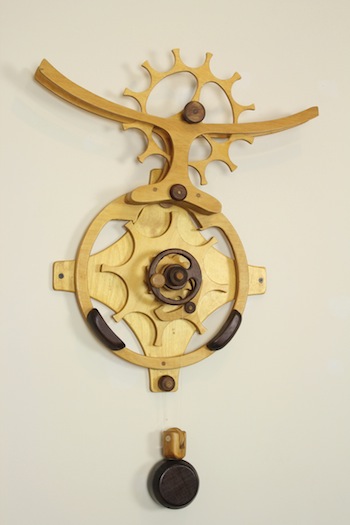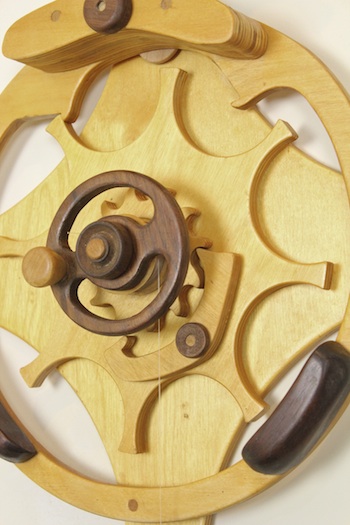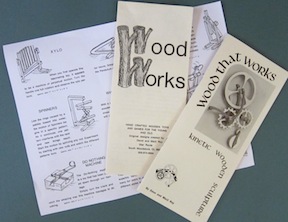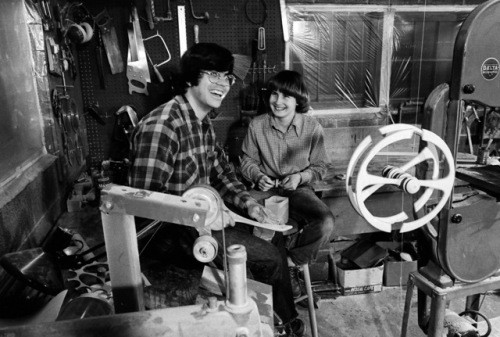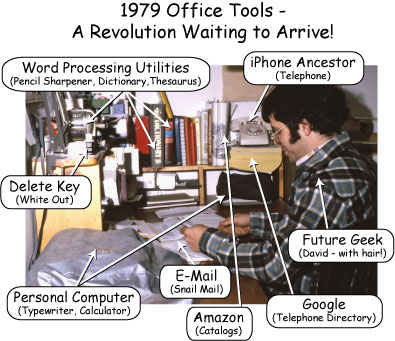In the Wood That Works history (here) we relate the story of Marji's exploration of wooden machines in college. The favorite sculpture created was her oversized (yet operational) wooden bicycle chain and gear assembly. It was her initial interest that started me exploring the realm of kinetic sculpture. I wanted her sculptures to move independently. She suggested I give it a try. It took me a couple of years but I did, and now 40 years later I am still at it!
For years, parts of that original sculpture have been displayed on a high shelf in my gallery space but most of it has been in pieces stuffed in an old brown paper bag in the storage room. I asked her to consider refurbishing it, re-assembling the parts, making it operational, and displaying it in the gallery. This past weekend she did.
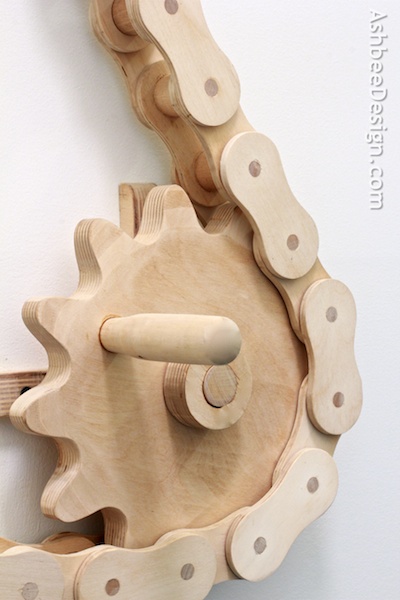
It is composed of about 10 feet of wooden chain made using Baltic birch plywood and dowels. Marji took it all apart, sanded everything and glued it together again.
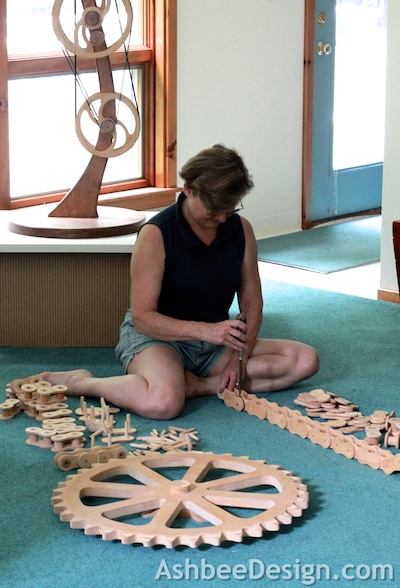
It is now once again, together and operational. It is displayed on the entry landing coming into the gallery.
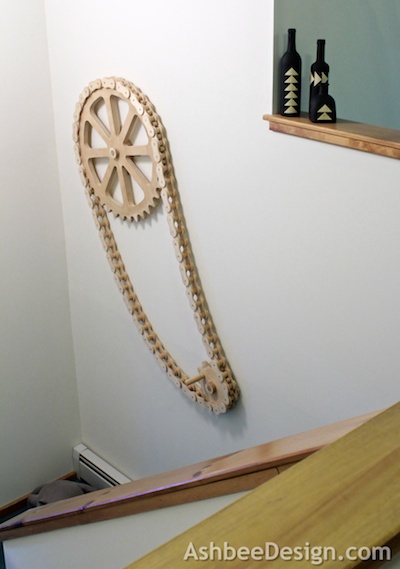
Operation isn't perfect. There are a few clunks now and then but still it has a great feel as you turn the lower gear and the chain transfers the power to the upper one.

When you come and visit the gallery, you can give it a twirl!


